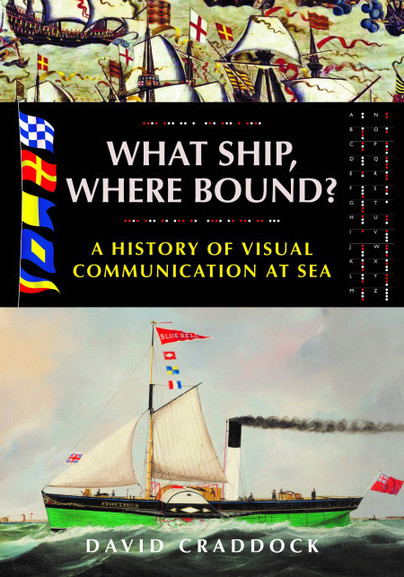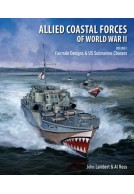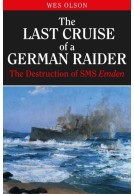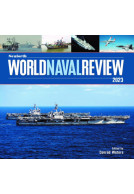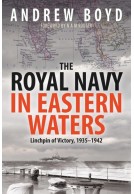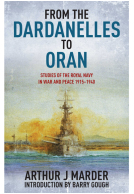What Ship, Where Bound? (Paperback)
A History of Visual Communication at Sea

Pages: 96
Illustrations: 300 colour & black and white illustrations
ISBN: 9781526784827
Published: 2nd February 2021
(click here for international delivery rates)
Order within the next 10 hours, 5 minutes to get your order processed the next working day!
Need a currency converter? Check XE.com for live rates
| Other formats available | Price |
|---|---|
| What Ship, Where Bound? eBook (75.1 MB) Add to Basket | £6.99 |
What Ship, Where Bound? takes its title from the familiar opening exchange of signals between passing ships, and celebrates the long history of visual communications at sea. It traces the visual language of signalling from the earliest naval banners or streamers used by the Byzantines in AD 900 through to morse signalling still used at sea today.
The three sections, Flag Signalling, Semaphore, and Light Signalling each trace the development of the respective methods in meeting the needs of commanders for secure and unambiguous communication with their fleets. Though inextricably linked to naval tactics and fleet manoeuvres, the history of signalling at sea also reflects the exponential growth in global maritime trade in the nineteenth century when dozens of competing systems vied for the attention of ship owners and led to a huge proliferation of codes.
By setting each method in the context of its time, the book explores their practical use, successes and shortcomings and, particularly in the case of signal flags – though by no means exclusively so – their place in our visual, cultural and maritime heritage. Covering a wide spectrum of visual signalling methods from false fire, through shapes, furled sails and coloured flags to experiments in high speed text messaging by signal lamp, the book also examines the complex interrelation between all three methods under battle conditions. A detailed analysis of visual signal exchanges before and during the Battle of Jutland reveals both the success and ultimate limitations on flag signalling at the limits of visibility.
Extensively and beautifully illustrated, the book will appeal to present and former mariners familiar with the signals, all those with an interest in naval and maritime history, with particular emphasis on late eighteenth-century signalling practice, artists and ship modellers, graphic designers and all those involved in visual communications today.
"I would order a semaphore display aloft of Bravo Zulu for David Craddock’s What Ship, Where Bound?"
The Northern Mariner/Le marin du nord - Vol. 32, No. 3 (Fall 2022)
"Extensively and beautifully illustrated, the book will appeal to present and former mariners familiar with the signals, all those with an interest in naval and maritime history, with particular emphasis on late eighteenth-century signalling practice, artists and ship modellers, graphic designers and seafarers involved in visual communications today."
Paul Ridgeway, Africa Ports & Ships, June 2022
As featured in
Shipping - June 2021
I recommend the book for an interesting read and beautiful illustrations.
Jonathan Seagrave - South West Soundings, South West Maritime History Society
David Craddock, who received his own signals training from a seafarer who served as a boy signaller at the Battle of Jutland, explores 2,500 years of visual communication at sea. Beginning with flag signalling and moving on to semaphore, light signalling and pyrotechnics, Craddock explains the history of signals in naval warfare from the Age of Sail to the modern era. He presents a range of flag systems, which look resplendent in the full colour illustrations, and also demonstrates how they were used, with the famous example of Nelson’s signal at Trafalgar and an extended discussion of signals at Jutland. Peace-time signalling is not the focus, but it isn’t neglected either – commercial codes and signals from ship to shore are also included in this thoroughly accessible history of the technology and practice.
Nautilus Telegraph, July 2021
The book will appeal to mariners and naval historians alike. It is a very well put together book and I would have no hesitation in very highly recommend it to our readers.
Shipping Today and Yesterday Magazine
This extensively and beautifully illustrated book will appeal to present and former mariners familiar with the signals, all those with an interest in naval and maritime history. This excellent little book with its concise text and superb illustrations is probably the best primer currently available on this subject.
World Ship Society - Marine News
‘… a fascinating addition to the literature of the sea.’
The Kedge Anchor
If you have ever wondered what the flags decorating a docked ship are saying, or other examples of signals encountered in daily life, this book has the answer. Interesting and well told, What Ship, Where Bound? It is wholeheartedly recommended.
Pirates and Privateers
Read the full review here
Click here for the video review
Bru Ships Youtube Channel
Review by Robin Knight
Pangbourne College website
This is an always interesting window on a little-known (by landlubbers) topic. It will, as the book’s publicity, puts it “both enlighten and entertain.”
Click here for the full review
Review by David Hobbs
Australian Naval Institute
The author brings to life the methods used by admirals to manoeuvre their squadrons and fleets in the manner laid down in various code books as well as the methods used to send long range messages to deployed fleets. The timelines alone give fascinating insight into the history of naval communications and the publisher’s comments on the back cover claim that this book ‘will both enlighten and entertain’. I think that statement exactly describes What Ship, Where Bound?. It is a delightfully written and illustrated book that will appeal to a wide readership including naval professionals, historians, yachtsmen, modellers and artists. I thoroughly recommend it.
Click here for the full review
“Wow what a splendid book. Amazing amount of detailed research and a must for the bookshelf of all buntings. The illustrations are the best I’ve seen in such a book.”
President of the Flag Institute
This book takes its title from the familiar opening exchange of signals between passing ships, and celebrates the long history of visual communications at sea. It traces the visual language of signalling from the earliest naval banners or streamers used by the Byzantines in AD 900 through to morse signalling still used at sea today. Covering a wide spectrum of visual signalling methods from false fire, through shapes, furled sails and coloured flags to experiments in high speed text messaging by signal lamp, the book also examines the complex interrelation between all three methods under battle conditions. A detailed analysis of visual signal exchanges before and during the Battle of Jutland reveals both the success and ultimate limitations of flag signalling at the limits of visibility. Extensively and beautifully illustrated, the book both enlightens and entertains.
Julian Stockwin
Read the full review here
About David Craddock
DAVID CRADDOCK began his working life in the Merchant Navy as a cadet with P&O. He came ashore to study graphic design and later a BA in History through the Open University. Over five decades he has combined both interests with a career in exhibition and graphic design specialising in historic interpretation. He is a Trustee of the Britannia Museum at the Royal Naval College Dartmouth and now devotes most of his time to writing. His first book What Ship Where Bound? A History of Visual Communication at Sea was published by Seaforth in February 2021 and was well received on both sides of the Atlantic.







